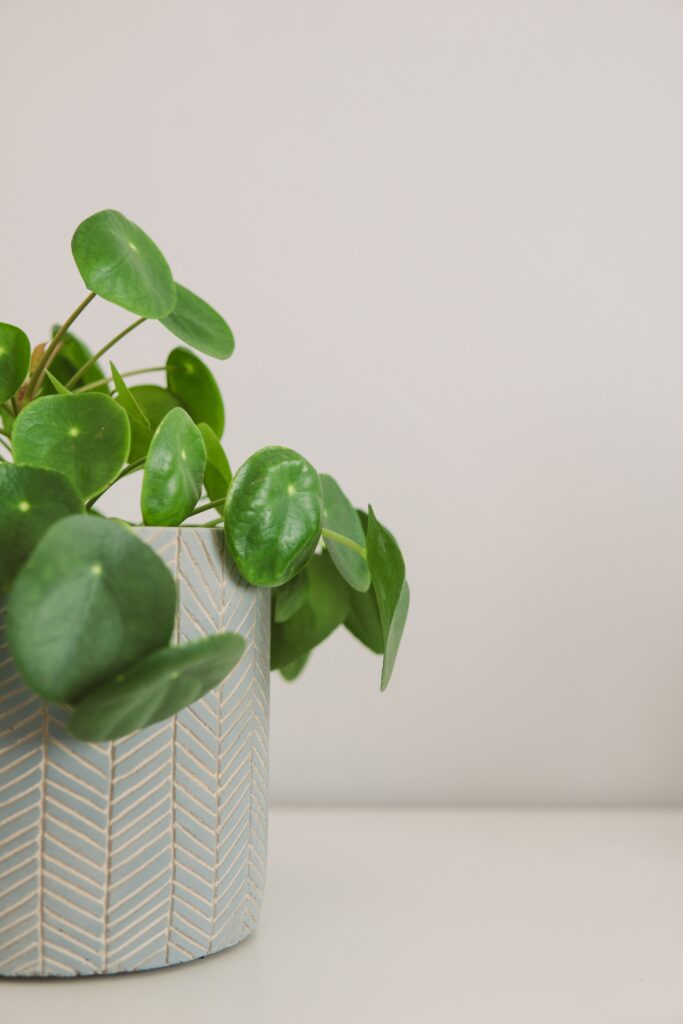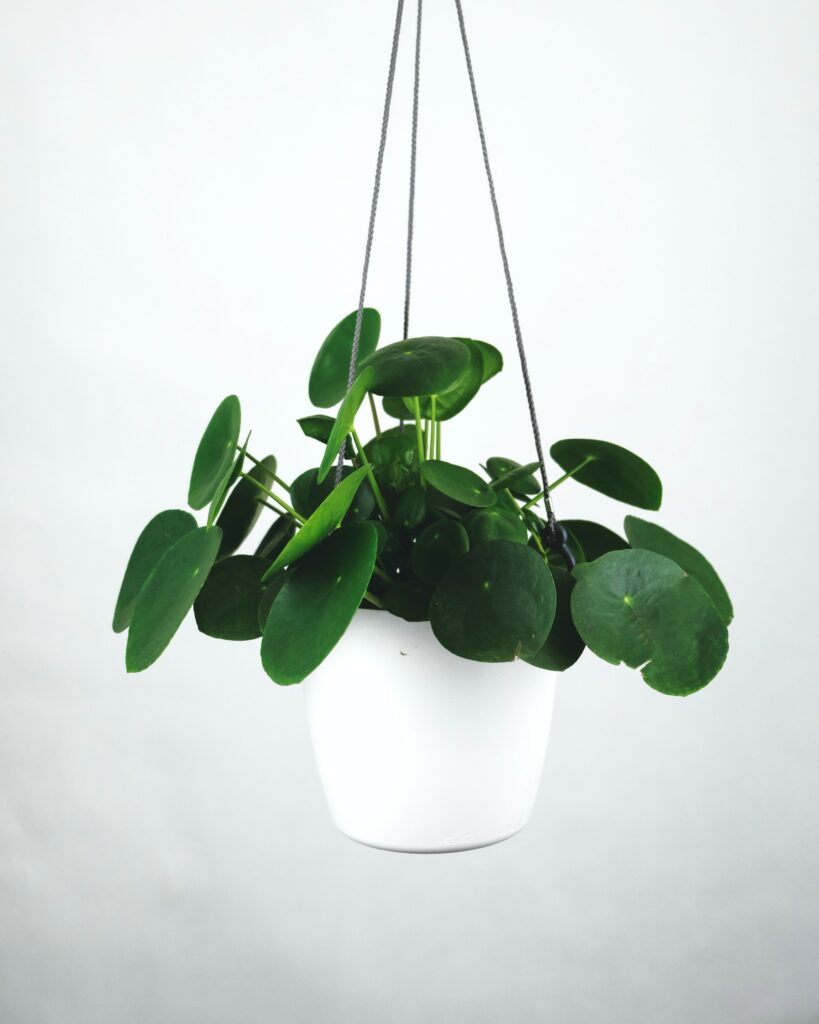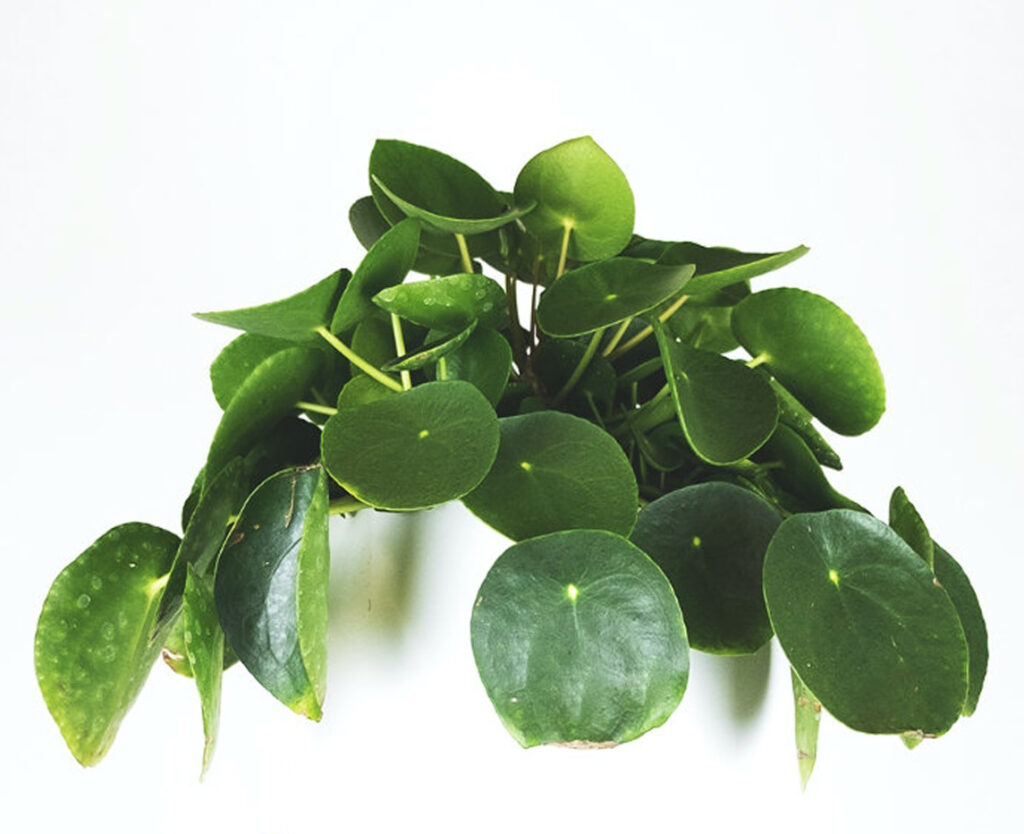The Chinese Money Plant, also known as Pilea peperomioides, is a beloved houseplant that is adored for its unique circular leaves and low-maintenance requirements. However, overwatering can be a common issue for this plant, leading to a plethora of problems such as yellowing leaves, root rot, and even death. If you suspect that your Chinese Money Plant has been overwatered, fret not, for there are steps you can take to fix your overwatered Pilea and nurse it back to health.
Basic Pilea Plant Care Needs
Soil and Watering
First, it is imperative to check the soil. This is the initial step in fixing an overwatered Chinese Money Plant. Stick your finger into the soil and see if it feels wet or dry. If the soil feels wet, it’s a sign that the plant has been overwatered. This is where the real work begins. Next, remove excess water. If the soil is wet, gently remove the plant from its pot and place it on a towel or paper towel. Use a clean cloth or paper towel to gently pat the leaves and soil to remove any excess water. This is a crucial step in ensuring that the plant does not drown in its own water.
After that, it’s time to repot the plant. If the soil is waterlogged, it’s important to repot the plant into fresh, well-draining soil. Choose a pot that is slightly larger than the current one and fill it with a mix of potting soil and perlite or sand to improve drainage. This will ensure that the plant has enough space to grow and thrive.
Signs of Overwatering
Overwatering is a common mistake that can lead to a variety of issues. From root rot to yellowing leaves and wilting, the consequences of overwatering can be severe. Therefore, it’s crucial to understand how to identify if your plant is overwatered. The first sign of overwatering in Pilea plants is the yellowing of leaves. This is a clear indication that the roots are drowning in water, and the plant is struggling to survive. Another sign of overwatering is wilting, which is characterized by droopy leaves that lack the necessary oxygen due to excess water.
In addition to these signs, you may also notice that the soil is constantly wet or that there is standing water in the pot. These are all indications that your Pilea is overwatered and needs immediate attention. Chinese Money Plants prefer to dry out slightly between waterings, so wait until the top inch of soil is dry before watering again. This will ensure that the plant receives just the right amount of water it needs to thrive.
To fix an overwatered Pilea, you need to take action quickly. Start by removing the plant from its pot and inspecting the roots. If they are brown and mushy, it’s a sign of root rot, and you need to trim away the affected roots. Then, repot the plant in fresh soil and water it sparingly.
Introduction: Understanding Overwatering and Its Effects on Pilea Peperomioides
The Pilea Peperomioides, or the Chinese money plant, is a beloved houseplant that is adored for its distinctive circular leaves and low-maintenance needs. Nevertheless, one of the most prevalent blunders that plant enthusiasts commit is overwatering their Pilea. This can result in a plethora of problems, such as root decay, yellowing foliage, and drooping. In this piece, we’ll dive into the intricacies of detecting and remedying an overwatered Pilea, so that you can ensure the longevity and vitality of your plant.
Signs of Overwatering: How to Identify if Your Pilea is Overwatered
One of the most common mistakes that plant owners make is overwatering their plants. However, this rule applies to Pilea plants as well. Overwatering can lead to a variety of problems, including root rot, yellowing leaves, and wilting. Therefore, it is important to know the signs of overwatering so that you can take action before it’s too late.
The first sign of overwatering is yellowing leaves. Therefore, it’s important to rule out other causes before assuming that your plant is overwatered. However, if you notice that the leaves of your Pilea are turning yellow, it could be a sign that you are watering it too much.
Another sign of overwatering is wilting. If your Pilea is wilting, it could be a sign that the roots are drowning in water. When the roots are overwatered, they cannot absorb oxygen, which can lead to wilting. Therefore, if you notice that your Pilea is wilting, it’s important to check the soil moisture level and adjust your watering schedule accordingly.
Finally, if you notice that the soil is constantly wet or soggy, it’s a sign that you are overwatering your Pilea. If the soil is too wet, it can lead to root rot, which can be fatal for your plant. Therefore, it’s important to pay attention to the soil moisture level and adjust your watering schedule accordingly.
The signs of overwatering in a Pilea plant include yellowing leaves, wilting, and constantly wet soil. By identifying these signs early on, you can take action to fix the problem and prevent further damage to your plant.
Steps to Fix an Overwatered Pilea: A Step-by-Step Guide

If you have noticed that your Pilea plant is looking droopy and the soil is constantly wet, it is likely that you have overwatered it. Overwatering can lead to root rot and other issues that can harm your plant. However, don’t worry, as there are steps you can take to fix an overwatered Pilea. Here is a step-by-step guide to help you:
Step 1: Remove the Pilea from its Pot
The first step in fixing an overwatered Pilea is to remove it from its pot. Carefully lift the plant out of the pot and gently shake off any excess soil. Be sure to handle the plant gently to avoid damaging the roots.
Step 2: Inspect the Roots
Once you have removed the Pilea from its pot, inspect the roots for any signs of rot or damage. Healthy roots should be firm and white, while rotting roots will be soft and brown. If you notice any rotting roots, use a pair of clean scissors to trim them off.
Step 3: Repot the Pilea
After inspecting the roots, it’s time to repot the Pilea. Choose a pot that is slightly larger than the previous one and has drainage holes. Fill the bottom of the pot with a layer of gravel or small rocks to improve drainage. Then, add fresh potting soil to the pot.
Step 4: Water the Pilea
Once you have repotted the Pilea, give it a good watering. However, be sure not to overwater it again. Water the plant until the soil is moist but not soaking wet. You can also add a layer of mulch on top of the soil to help retain moisture.
Step 5: Place the Pilea in a Bright Spot
Finally, place the Pilea in a bright spot where it can receive plenty of indirect sunlight. Avoid placing it in direct sunlight as this can cause the leaves to burn. Also, be sure to keep the plant away from any cold drafts or hot air vents.
Fixing an overwatered Pilea is not difficult if you follow these simple steps. By inspecting the roots, repotting the plant, and providing it with proper care, you can help your Pilea thrive and grow healthy again.
How to Prevent Overwatering in the Future: Tips and Tricks
Ensuring the health and longevity of your Pilea is of utmost importance, and preventing overwatering is a crucial step in achieving this. To help you avoid overwatering your plant, we have compiled a list of tips and tricks that are sure to come in handy.
First, it is important to regularly check the soil moisture level before watering your Pilea. This can be done by sticking your finger about an inch deep into the soil. If the soil feels dry, it’s time to water your plant. However, if it’s still moist, it is best to wait a few more days before watering.
Another important factor to consider is the type of soil you use. Pileas prefer well-draining soil that allows excess water to drain away quickly. Therefore, it is recommended to use a potting mix that contains perlite or sand to improve drainage.
Choosing the right pot size is also crucial in preventing overwatering. Pileas prefer to be slightly root-bound, so it is best to choose a pot that’s only slightly larger than the root ball. A pot that’s too large can hold too much water, leading to overwatering.
Watering less frequently is another key tip to keep in mind. Pileas don’t need to be watered as often as other houseplants. It is best to water your Pilea only when the soil is dry to the touch.
Last, using a watering can with a narrow spout can help prevent overwatering. This allows you to control the amount of water you’re pouring into the soil, ensuring that you don’t overwater your plant.
By following these tips and tricks, you can fix your overwatered your Pilea and keep your plant healthy and thriving.
Common Mistakes to Avoid When Caring for Your Pilea Peperomioides
Caring for a Pilea Peperomioides can be a truly rewarding experience, but it’s important to steer clear of common mistakes that can lead to overwatering and other issues. Here are some mistakes to avoid when caring for your Pilea:
Overwatering
This is the most common mistake that Pilea owners make. Overwatering can lead to root rot, which can be fatal for your plant. It’s crucial to water your Pilea only when the top inch of soil is dry to the touch. Remember, too much water can be just as harmful as too little! If you notice your plant appears soggy, you can fix an overwatered Pilea plant by following the steps highlighted in the section above.
Using the wrong soil
Pileas prefer well-draining soil that allows water to flow through easily. Using heavy soil that retains water can lead to overwatering and root rot. So, make sure to choose the right soil for your Pilea to thrive.
Placing your Pilea in direct sunlight
While Pileas do need bright, indirect light, placing them in direct sunlight can cause their leaves to burn and dry out. So, it’s important to find the right balance of light for your Pilea to flourish.
Neglecting to fertilize
Pileas benefit from regular fertilization during the growing season. Neglecting to fertilize can lead to stunted growth and a lack of new leaves. So, make sure to give your Pilea the nutrients it needs to thrive.
Not repotting when necessary
Pileas can quickly outgrow their pots, which can lead to root-bound plants and overwatering. So, it’s important to keep an eye on your Pilea’s growth and repot it when necessary to ensure it has enough space to grow.
By avoiding these common mistakes, you can ensure that your Pilea stays healthy and happy for years to come. Remember, taking care of your Pilea is a journey, not a destination, so keep learning and experimenting to find what works best for your plant!
Conclusion: Keeping Your Pilea Healthy and Happy

The maintenance of a healthy and content Pilea requires a certain degree of effort and attention. It is crucial to comprehend the watering requirements of your plant and to steer clear of overwatering it. Always ensure that you check the soil moisture level before watering and provide sufficient drainage for your Pilea. Furthermore, it is imperative to ensure that your plant is receiving an adequate amount of light and is not exposed to extreme temperatures or drafts. Regularly dusting the leaves and providing occasional fertilization can also aid in the flourishing of your Pilea.
Understanding your plant’s water needs will go a long way to it’s long-term health. And if you happen to water too much, know that it’s easy to fix an overwatered Pilea by following the steps outlined in this guide. By adhering to these guidelines and being mindful of your plant’s needs, you can relish in the beauty and health of your Pilea for years to come. Remember, a little bit of care can go a long way in keeping your plants happy and thriving.
Frequently Asked Questions
How do I know if my Pilea is overwatered?
Overwatering can cause the leaves of your Pilea to turn yellow and wilt. The soil may also be constantly wet and have a foul odor. You may also notice mold or fungus growing on the soil surface.
What should I do if I suspect my Pilea is overwatered?
The first step is to stop watering your Pilea immediately. Allow the soil to dry out completely before watering again. You may also need to remove any excess water from the saucer or pot to prevent the roots from sitting in water.
How often should I water my Pilea after fixing an overwatering issue?
It’s important to let the soil dry out completely before watering again. Depending on the humidity and temperature of your home, this may take anywhere from a few days to a week or more. Once the soil is dry, water your Pilea thoroughly and then wait for the soil to dry out again before watering.
Can I save an overwatered Pilea?
Yes, it is possible to save and fix an overwatered Pilea. The key is to act quickly and stop watering immediately. Allow the soil to dry out completely and then water your Pilea sparingly until it recovers. You may also need to trim off any yellow or wilted leaves to encourage new growth.

